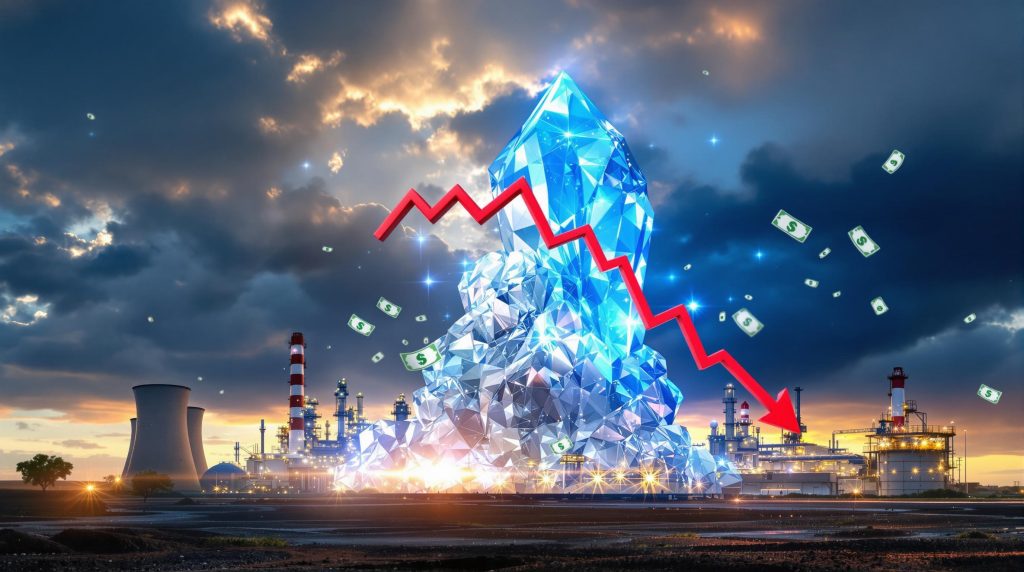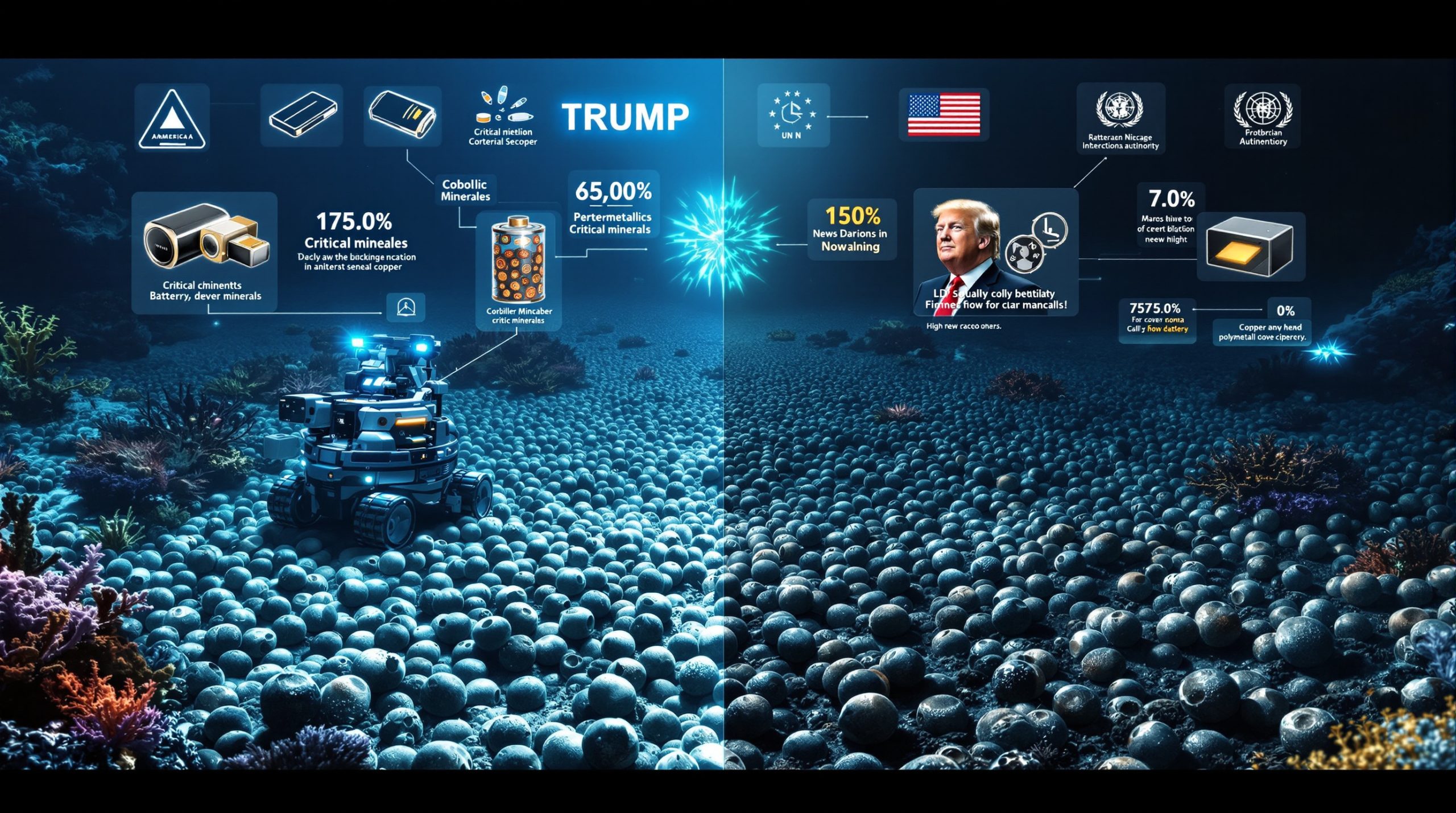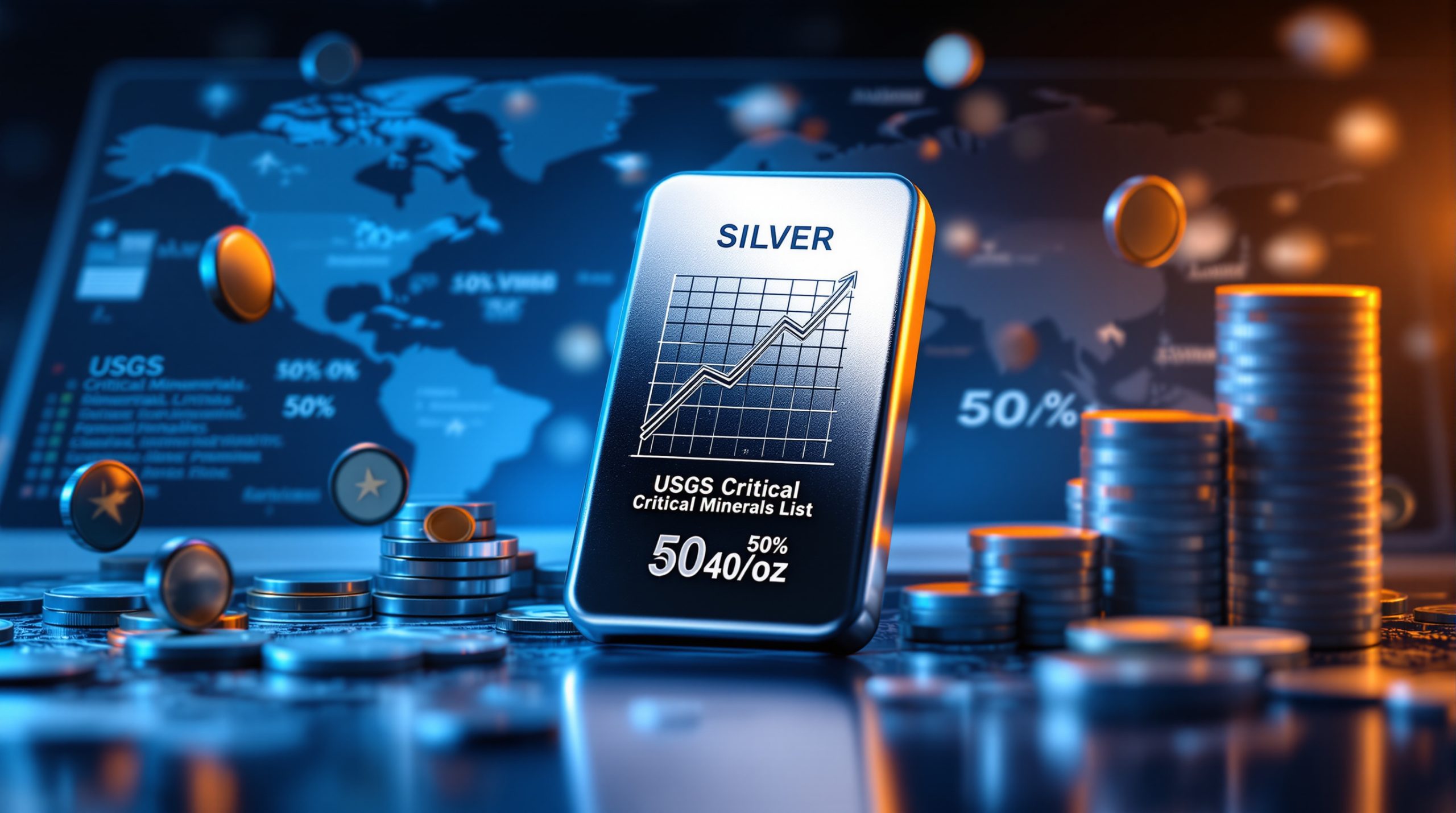IGO's Kwinana Lithium Hydroxide Refinery Writedown: Strategic Implications and Future Outlook
The recent announcement of a significant impairment on IGO Limited's stake in the Kwinana lithium hydroxide refinery marks a pivotal moment for Australia's battery materials sector. This comprehensive analysis examines the factors behind the writedown, its implications for IGO's future strategy, and the broader impact on Australia's ambitions in the lithium processing industry.
The Kwinana Refinery Writedown: Understanding the Impact
The Scale of the Impairment
IGO Limited (ASX: IGO) shocked investors with the announcement of a substantial impairment on its 49% stake in the troubled Kwinana lithium hydroxide refinery. While the exact figure hasn't been officially disclosed, industry analysts estimate the writedown runs into hundreds of millions of dollars, representing a significant portion of IGO's initial investment in the facility.
The market reaction was swift and severe. IGO's share price plummeted following the announcement, wiping substantial value from the company's market capitalization in a matter of days. Trading volumes surged to several times their normal levels as both retail and institutional investors reassessed their exposure to the company.
"The writedown on Kwinana is more than just an accounting adjustment; it's a stark acknowledgment that the project's economics have materially weakened," noted a recent analysis from Stocks Down Under.
Technical and Operational Challenges
The Kwinana refinery has been plagued by persistent commissioning problems since IGO acquired its stake. Despite considerable effort and investment, production throughput remains substantially below the facility's nameplate capacity, with repeated technical faults hampering operational efficiency.
Operating costs have ballooned beyond initial projections, creating a perfect storm when combined with falling lithium prices. The technical complexity of converting spodumene concentrate into battery-grade lithium hydroxide proved far more challenging than anticipated, with product quality and consistency issues further complicating the ramp-up process.
Industry insiders point to several specific technical hurdles that have impeded progress:
- Challenges in achieving consistent removal of impurities to meet stringent battery-grade specifications
- Heat exchange system inefficiencies increasing energy consumption and operating costs
- Material handling complications resulting in productivity bottlenecks
- Wastewater treatment complexities exceeding initial design parameters
These technical challenges aren't unique to Kwinana but have proven particularly difficult to overcome within the project's specific context and constraints.
Factors Behind Kwinana's Underperformance
Market Conditions and Pricing Pressures
The Kwinana refinery's struggles coincide with a dramatic deterioration in lithium market conditions. Lithium hydroxide prices have collapsed by more than 60% since their 2022 peak, undermining the economic foundations of the project.
This price decline stems from several factors:
- Rapid expansion of production capacity, particularly in China
- New supply coming online from projects in Africa and South America
- Softer-than-expected electric vehicle sales in key markets
- Strategic inventory management by battery manufacturers
The combination of operational challenges and unfavorable market conditions created a particularly difficult environment for a facility still working through its commissioning phase.
Market Reality: While the long-term outlook for lithium demand remains robust, the near-term market is experiencing significant oversupply. This has created a challenging environment for high-cost producers and new entrants, particularly those still resolving technical issues.
Joint Venture Complexities
The Kwinana refinery operates under a joint venture arrangement between IGO (49%) and Tianqi Lithium (51%), adding another layer of complexity to an already challenging situation. Decision-making processes have reportedly been complicated by differing strategic priorities between the partners.
The governance structure of the joint venture may have hindered rapid response to emerging technical issues, with approval processes for significant operational changes requiring consensus between partners with potentially divergent interests and perspectives.
Industry observers note that while joint ventures can provide access to complementary skills and resources, they can also introduce friction in operational management—particularly during periods of stress when quick, decisive action is required.
The Technical Complexity of Lithium Hydroxide Production
Converting spodumene concentrate into battery-grade lithium hydroxide involves a sophisticated series of chemical processes that present significant technical challenges. The process requires:
- Calcination of spodumene at temperatures exceeding 1000°C
- Acid roasting to convert the lithium into a soluble form
- Multiple leaching and purification steps to remove impurities
- Crystallization of lithium hydroxide monohydrate
- Final purification to meet stringent battery-grade specifications
Each step demands precise control of chemical compositions, temperatures, and reaction times. Achieving consistent product quality at industrial scale has proven more difficult than anticipated, with the technological learning curve considerably steeper than IGO initially projected.
This experience highlights the significant gulf between mining operations and chemical processing—two industries requiring fundamentally different expertise and operational approaches. Recent developments in direct lithium extraction technologies have further complicated the competitive landscape for traditional processors.
Greenbushes: The Crown Jewel in IGO's Portfolio
World-Class Asset Fundamentals
While the Kwinana refinery has underperformed, IGO's 24.99% interest in the Greenbushes lithium mine (held through its joint venture with Tianqi) remains a world-class asset. Widely regarded as the largest and highest-grade hard-rock lithium deposit globally, Greenbushes continues to be a cornerstone of IGO's portfolio.
The mine delivered spodumene production of approximately 1.48 million tonnes in FY25, with cash costs averaging roughly A$325 per tonne—positioning it firmly in the lowest cost quartile globally. This exceptional cost position provides significant insulation from market volatility, allowing Greenbushes to remain profitable even as higher-cost producers struggle.
Greenbushes benefits from several competitive advantages:
- Exceptional ore grades exceeding 2.0% Li₂O (compared to global average of ~1.0-1.5%)
- Economies of scale from large-scale, efficient operations
- Favorable mineralogy allowing for relatively straightforward processing
- Established infrastructure and proximity to port facilities
These fundamentals ensure Greenbushes remains a reliable cash generator for IGO, providing financial stability during a challenging period for the broader lithium market.
Financial Contribution and Strategic Value
Despite weakness in lithium prices, Greenbushes continues to generate substantial cash flow for IGO, offsetting some of the financial pressure from the Kwinana impairment. The mine's low-cost position means it can weather market downturns better than most competitors, maintaining positive margins even in a depressed pricing environment.
Beyond its immediate financial contribution, Greenbushes provides IGO with strategic optionality. The consistent production of high-quality spodumene concentrate secures IGO's position in the lithium supply chain, potentially opening doors to alternative downstream arrangements should the company decide to pivot away from the Kwinana refinery.
Strategic Crossroads: Options for IGO's Path Forward
Double Down or Pivot?
IGO faces a critical strategic decision regarding the future of its investment in the Kwinana refinery. The company has two broad options: double down and fix the refinery, or cut its losses and redirect capital toward its mining strengths.
Option 1: Commit Additional Resources to Kwinana
Under this approach, IGO would:
- Invest additional capital to resolve persistent technical issues
- Implement comprehensive operational improvements to boost throughput
- Reduce unit costs through efficiency gains and process optimization
- Position the facility to capitalize on an eventual lithium market recovery
This strategy represents a continued commitment to vertical integration but would require substantial financial resources and management attention at a time when lithium prices remain under pressure.
Option 2: Scale Back or Exit the Refinery Investment
Alternatively, IGO could:
- Mothball or significantly scale back operations to minimize ongoing losses
- Seek a strategic buyer for its stake in the facility
- Refocus capital and management resources on upstream mining assets
- Potentially explore alternative downstream partnerships or off-take arrangements
This approach would represent a strategic pivot back to IGO's core mining competencies but would require acknowledging a significant financial loss on the Kwinana investment.
Restructuring the Joint Venture
A third option involves restructuring the joint venture arrangement with Tianqi to address governance challenges and streamline decision-making. This could involve:
- Renegotiating management and operational control arrangements
- Establishing clearer decision-making frameworks and authorities
- Potentially adjusting ownership percentages to align with operational responsibilities
- Bringing in additional technical expertise to address specific operational challenges
Industry analysts suggest that improving joint venture governance could unlock significant operational improvements, potentially salvaging value from the troubled asset.
Implications for Australia's Battery Materials Strategy
A Setback for Downstream Processing Ambitions
The challenges at Kwinana have broader implications for Australia's national strategy to move up the battery materials value chain. The facility was positioned as a cornerstone of Australia's ambitions to capture more value from its abundant lithium resources through downstream processing.
The setback raises important questions about Australia's competitive position in lithium refining, particularly given the dominance of Chinese processors who benefit from lower operating costs, established technical expertise, and integration with battery manufacturing ecosystems.
Regulatory and Policy Considerations
Australian policymakers face difficult questions about how best to support the development of domestic battery materials processing. Options include:
- Targeted incentives for technology development and operational excellence
- Strategic infrastructure investments to reduce operating costs
- Potential border adjustment mechanisms to level the playing field with overseas processors
- Research and development support to address technical challenges
The experience at Kwinana suggests that Australia's downstream processing ambitions may require more nuanced approaches that acknowledge the technical complexity and competitive challenges involved. This aligns with broader discussions around Australia lithium innovations and the national critical minerals strategy.
The Broader Lithium Market Outlook
Current Market Dynamics
The global lithium market continues to face oversupply conditions that have depressed prices since late 2022. New production from multiple regions has outpaced demand growth, creating a market imbalance that has particularly impacted lithium hydroxide prices.
Chinese processors have continued to expand capacity despite margin pressure, while new projects in Africa and South America have added further supply to an already saturated market. Meanwhile, electric vehicle sales growth has been slower than some forecasts projected, particularly in China where government subsidy reductions have impacted demand.
Long-Term Demand Fundamentals
Despite near-term challenges, the long-term demand outlook for lithium remains robust. BloombergNEF expects lithium demand to more than triple by 2030, driven by:
- Accelerating electric vehicle adoption across global markets
- Growing energy storage deployments for grid stability and renewable integration
- Expanding portable electronics markets requiring high-performance batteries
- Industrial applications leveraging lithium-ion technology
This projected demand growth should eventually absorb current oversupply, though the timing of market rebalancing remains uncertain. Innovative methods like geothermal lithium extraction could further influence future supply dynamics.
Supply Rationalization and Market Recovery
The prolonged period of low lithium prices is already triggering supply responses across the industry:
- Higher-cost producers have begun to curtail production
- Development timelines for new projects are being extended
- Capital investment in expansion projects has slowed significantly
- Some proposed projects have been shelved entirely
These supply-side adjustments should eventually help rebalance the market, though the process may take time given the significant new capacity added in recent years. The overall battery metals outlook remains complex but fundamentally supported by the energy transition.
Investment Considerations: Approaching IGO in the Current Context
Risk Assessment Framework
Investors evaluating IGO in light of the Kwinana impairment should consider several key factors:
- Balance Sheet Strength: Assess IGO's financial position after the writedown and its ability to weather continued lithium market weakness
- Cash Flow Generation: Evaluate ongoing cash flow from Greenbushes and nickel operations
- Management Credibility: Consider management's track record in addressing operational challenges
- Strategic Direction: Monitor for signals regarding IGO's approach to the Kwinana facility
The recent share price weakness may tempt contrarians who see value in IGO's world-class mining portfolio, particularly the Greenbushes asset which continues to generate cash despite market headwinds.
Valuation Considerations
From a valuation perspective, several approaches merit consideration:
- Sum-of-parts analysis: Separately valuing IGO's Greenbushes stake, nickel operations, and the Kwinana facility (post-impairment)
- Comparable company analysis: Benchmarking against other lithium producers with similar asset portfolios
- Discounted cash flow modeling: Projecting future cash flows under various lithium price scenarios
Investors should pay particular attention to the company's enterprise value relative to its resource base, giving appropriate weight to the quality and cost position of its assets.
Key Metrics to Monitor
Going forward, several metrics will provide important insights into IGO's trajectory:
- Greenbushes production volumes and unit costs
- Progress on resolving Kwinana's technical and operational issues
- Management commentary on strategic direction
- Cash flow generation and capital allocation decisions
- Lithium price trends, particularly for battery-grade hydroxide
These indicators will help investors gauge whether IGO's strategy is gaining traction and whether the current valuation represents an opportunity or a value trap.
FAQ Section
What exactly is a lithium hydroxide refinery?
A lithium hydroxide refinery converts spodumene concentrate (typically containing 5-6% lithium oxide) into battery-grade lithium hydroxide monohydrate through a complex chemical process. This refined product is a critical component in high-nickel content cathodes used in premium electric vehicle batteries, offering greater energy density and performance compared to batteries using lithium carbonate.
The conversion process involves multiple stages including calcination, acid roasting, leaching, purification, and crystallization. Each stage requires precise control of conditions to achieve the ultra-high purity (99.5%+) required for battery applications.
How significant is the Kwinana writedown to IGO's overall value?
While the exact figure hasn't been disclosed, analysts estimate the impairment runs into hundreds of millions of dollars. This represents a material portion of IGO's investment in the facility and has significantly impacted investor sentiment and share price, according to reporting from The Australian Financial Review.
The writedown's significance extends beyond its immediate financial impact—it raises questions about IGO's downstream strategy and highlights the challenges of moving from mining into chemical processing. However, the company's world-class Greenbushes asset continues to underpin substantial value, providing a buffer against the Kwinana impairment.
Could IGO completely exit the Kwinana joint venture?
A complete exit from the Kwinana joint venture is certainly possible, though several factors would influence such a decision:
- Market conditions and the availability of potential buyers
- Contractual arrangements with joint venture partner Tianqi
- Strategic considerations regarding vertical integration
- The cost-benefit analysis of exit versus remediation
Any exit would likely involve significant financial implications, potentially including additional writedowns depending on the achievable sale price in the current market environment. The company would need to weigh these costs against the ongoing financial drain of maintaining involvement in a struggling asset.
What makes Greenbushes such a valuable lithium asset?
Greenbushes stands out as an exceptional lithium asset due to several key attributes:
- Superior grade: With lithium oxide (Li₂O) concentrations exceeding 2%, Greenbushes' ore grade significantly outperforms the global average of 1.0-1.5%
- Scale: The deposit's size supports large-scale, efficient operations with multi-decade mine life
- Cost position: Cash costs averaging around A$325 per tonne position Greenbushes in the lowest quartile globally
- Product quality: The mine produces premium spodumene concentrate with favorable mineralogy
- Infrastructure: Established processing facilities and proximity to port infrastructure
These characteristics allow Greenbushes to remain profitable even during periods of weak lithium prices, positioning it as one of the most resilient assets in the global lithium industry.
How does this writedown impact Australia's critical minerals strategy?
The Kwinana refinery was positioned as a flagship project in Australia's push to move up the battery materials value chain. This setback raises important questions about several aspects of Australia's critical minerals strategy:
- The economic viability of domestic lithium processing given higher operating costs
- The technical expertise required to successfully operate chemical processing facilities
- The competitive dynamics with established Chinese processors
- The appropriate role of government in supporting downstream integration
Australian policymakers may need to reassess the balance between upstream extraction (where Australia has clear competitive advantages) and downstream processing (where challenges appear more significant than initially anticipated).
Further Exploration
Readers interested in learning more about Australia's lithium industry and battery materials sector can explore related educational content at Stocks Down Under, which offers various perspectives on developments in the Australian resources sector.
For those seeking to understand the
Want to Catch the Next Major Mineral Discovery?
Discovery Alert's proprietary Discovery IQ model instantly notifies investors of significant ASX mineral discoveries, turning complex geological data into actionable investment opportunities. Explore why historic discoveries have generated substantial returns by visiting the dedicated discoveries page and begin your 30-day free trial today to position yourself ahead of the market.




